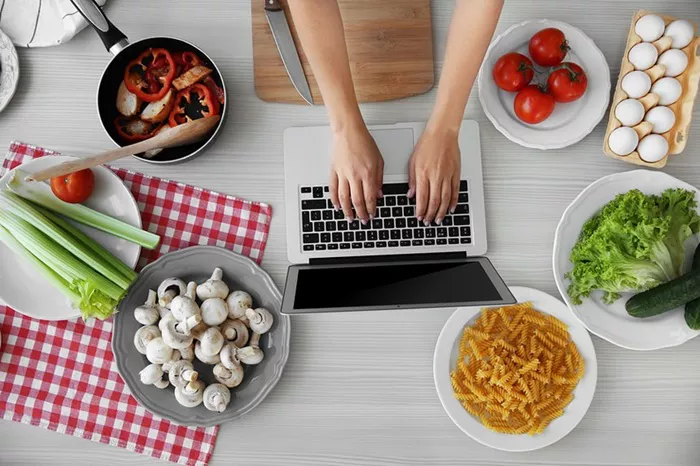Food blogging on YouTube is a fantastic way to showcase your culinary creativity, share recipes, and connect with food enthusiasts worldwide. With its visual nature, YouTube allows you to present food preparation and cooking in an engaging format, helping viewers learn techniques and discover new dishes. However, starting a food blog on YouTube requires more than just a love for cooking—it demands planning, creativity, and consistency.
This guide will walk you through everything you need to know about starting your journey as a food blogger on YouTube, from setting up your channel to creating engaging content and growing your audience.
Step 1: Define Your Niche
Before diving into content creation, it’s essential to identify your niche. A niche helps you stand out in a crowded market and attract a dedicated audience.
Popular Niches in Food Blogging:
Vegan and vegetarian recipes
Regional or cultural cuisine
Quick and easy meals
Baking and desserts
Healthy or diet-specific recipes
Choose a niche that aligns with your passion and expertise. If you specialize in something unique, it will give your channel a competitive edge.
Step 2: Create a YouTube Channel
Creating a YouTube channel is the first step toward building your online presence.
Sign In: Log into your Google account and navigate to YouTube.
Create a Channel: Click on your profile picture, select “Your Channel,” and customize it.
Optimize Your Profile: Choose a catchy channel name, write a compelling description, and upload a visually appealing banner image.
Step 3: Plan Your Content Strategy
Planning is key to producing consistent and engaging content.
Brainstorm Video Ideas: Create a list of recipes, cooking techniques, or food reviews you want to cover.
Outline Video Formats: Decide on formats such as tutorials, “cook with me” sessions, or ingredient reviews.
Schedule Content: Develop a content calendar to ensure regular uploads.
Step 4: Invest in Quality Equipment
High-quality visuals and audio are essential for a successful YouTube channel.
Camera: Invest in a DSLR, mirrorless camera, or even a high-quality smartphone.
Microphone: Ensure clear audio with a lapel or shotgun microphone.
Lighting: Use natural light or purchase softbox lights for consistent illumination.
Tripod: Keep your shots steady with a reliable tripod.
Step 5: Film and Edit Your Videos
Your video content needs to be visually appealing and well-edited to retain viewers.
Filming Tips:
Keep your kitchen clean and organized.
Use close-up shots to highlight textures and details.
Shoot from multiple angles to create a dynamic video.
Editing Tools: Use software like Adobe Premiere Pro, Final Cut Pro, or free tools like iMovie or DaVinci Resolve to edit your videos.
Add Engaging Elements: Include text overlays, background music, and visual effects to enhance your videos.
Step 6: Optimize Videos for SEO
SEO (Search Engine Optimization) ensures your videos are discoverable.
Keyword Research: Use tools like Google Keyword Planner or TubeBuddy to find relevant keywords.
Video Titles: Create attention-grabbing titles that include keywords.
Descriptions: Write detailed descriptions summarizing the video’s content and include keywords.
Tags: Add relevant tags to help YouTube categorize your video.
Thumbnails: Design custom thumbnails that are visually appealing and informative.
Step 7: Promote Your Channel
Promoting your content helps reach a larger audience and grow your channel.
Social Media: Share your videos on platforms like Instagram, Facebook, and Twitter.
Collaborations: Partner with other food bloggers or influencers.
Engage with Viewers: Respond to comments and ask viewers to like, share, and subscribe.
Call-to-Actions (CTAs): Encourage viewers to subscribe and turn on notifications at the end of each video.
Step 8: Engage Your Audience
Building a loyal audience requires genuine interaction.
Reply to Comments: Engage with your audience by answering questions and thanking them for their feedback.
Community Posts: Use YouTube’s community tab to share updates, polls, and behind-the-scenes content.
Host Live Sessions: Go live to connect with your audience in real-time.
Step 9: Analyze Your Performance
Regularly review your channel’s performance to understand what works and what doesn’t.
YouTube Analytics: Track metrics like watch time, audience demographics, and traffic sources.
Experiment: Try different content styles or video lengths based on audience preferences.
Adapt: Make changes to your strategy based on data insights.
Step 10: Monetize Your Channel
Once your channel gains traction, explore ways to earn revenue.
Ad Revenue: Join the YouTube Partner Program to earn from ads.
Sponsorships: Collaborate with brands to feature products in your videos.
Merchandise: Sell branded items like aprons or recipe books.
Affiliate Marketing: Earn commissions by promoting products through affiliate links.
Conclusion
Starting a food blogging journey on YouTube is a rewarding experience that allows you to share your love for cooking with the world. By defining your niche, creating high-quality content, and engaging with your audience, you can build a successful channel that stands out in the competitive world of food blogging.
Consistency, creativity, and passion are the keys to success. With these tips, you’re ready to turn your culinary skills into a thriving YouTube presence. Happy blogging!
Related Topics
- What Is Audio Blogging?
- How To Do Video Blogging On YouTube?
- How Can You Start Blogging Without Investment?

